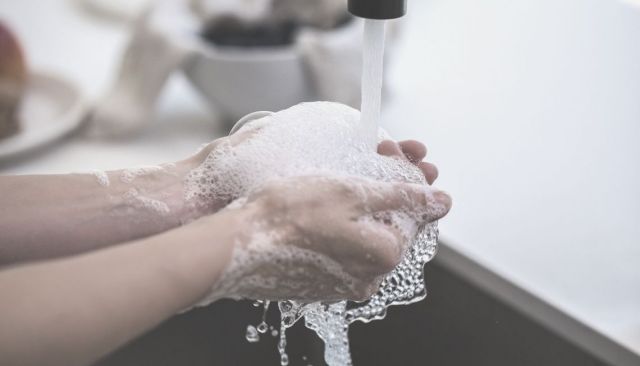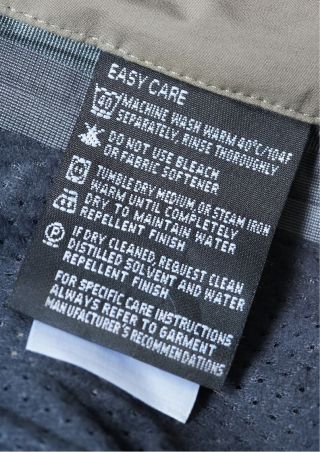Deciding to invest in organic cotton garments, bedding and other soft furnishings is a wise. After all, organic cotton is:
- Soft, durable and resilient
- Good for the planet: sustainably farmed with minimal impact
- Safe for your family: non-toxic with no harmful dyes
- Socially-responsible: farming and production use ethical labour
- Great for those with sensitive skin and respiratory concerns
- Great for temperature moderation in our warm Aussie climate
But, to get the most out of cotton products, and see them last for many years to come, they require appropriate care.
That’s why we’ve written this blog post - to provide you with the ultimate guide to the easy care and maintenance of cotton fabric products - just like your kids’ bedding.
Why care for organic cotton bedding in an environmentally-friendly way
The use of cotton dates back to 5000 BC. It has a history of being used in a variety of purposes (from making boat sails to a form of currency) right across the world. That’s how vital cotton has become to industry, economy and our everyday lives.

But, along the way, cotton began to be produced in ways that were increasingly detrimental to the environment. Today, along with the guidance of certification bodies like GOTS (Global Organic Textile Standard) and Oeko-Tex, we’re getting back to nature and working to farm and produce cotton items in more environmentally-friendly ways.
Organic cotton bedding like the Wriggly Toes Organic Kids Bedding range is produced to meet Oeko-Tex Standard 100 and GOTS certifications, which means that from growing the cotton plants, right through to the finished product, all processes and materials used must meet certain environmental standards.
GOTS sets limits on the environmental impacts of the production process, as well as social criteria. This restricts the use of toxic and potentially toxic chemicals like Azo dyes, ensures specific biodegradability requirements are met and that workers are provided with safe and healthy working conditions for fair wages.
Water treatment and waste management are important components of GOTS certification. For example, it requires that 95% of the water used in producing organic cotton fibre is green water, meaning it comes from rainwater and water already in the soil. And the wastewater from the cotton is free from toxins, thereby protecting our waterways. In contrast, non-organic cotton diverts and pollutes water in our natural waterways - at significant cost to the environment.
The Oeko-Tex Standard 100 sets limits on which substances can be used, to what extent they are permissible and how to test for them.
Considering the effort that has gone into farming and producing a product as environmentally-friendly as organic cotton, it makes sense that the care and maintenance of cotton fabric items should maintain their organic purity and therefore, use the most eco-friendly means possible.
With all our modern conveniences, it’s easy to leave our machines on their standard settings and rush through the washing process, just to “get it done”. But I assure you, pay it a little more consideration, and you’ll be glad you did!
Organic Cotton Washing Instructions
The care and maintenance of cotton fabric bedding start from when you first receive your product.
Although we are providing more in-depth advice in this blog post, the number one rule to the care and maintenance of cotton fabric items is: to always read and follow individual care labels. That’s because features individual to each product can affect how it is best cared for. Those features may include dyes, prints, embellishments and even the cut or structure of an item.

Always wash bedding before use. Doing so will give you peace of mind that the product holds up how the brand intended/promised, but it’s also important for safety reasons. Even though Oeko-Tex certified organic cotton is free from harmful dyes and pesticides, each item passes through many pairs of hands before it arrives in your home. Doing a pre-wash will ensure any remaining germs are washed away before they reach your kids’ beds.
Choosing Your Detergent & Machine Preparation
When it comes to the care and maintenance of cotton fabric products, like bedding, the products you choose are just as important as your washing and drying methods. In terms of laundry detergent, a mild product is best.
While powerful detergents seem like a good idea in terms of the level of cleanliness they offer, they are packed with abrasive chemicals known as surfactants. These chemicals aren’t good for the cotton, your family or the environment. For instance, when they come into contact with the skin, they disrupt the proteins, inhibiting how the skin’s barrier retains moisture, causing dryness and irritation.
Many powerful detergents also contain high levels of phosphates to soften water and suspend the extracted dirt particles. Phosphorus contributes to the "excessive growth of blue-green algae in our inland waterways." So, look for NP on the laundry detergent label which indicates no or less than 0.5% phosphorus.
Kids skin is more sensitive than that of adults. That’s why we recommend using a low-irritant laundry detergent with their skin in mind. Try to avoid detergents which contain these ingredients:
Enzymes
These are a byproduct of bacteria and are biological catalysts to target different types of stains quickly. They aggressively digest fats and oils which is what makes them attractive in terms of clean laundry. However, enzymes can’t differentiate between your sheets and your kids’ skin. Any enzyme residue on bedding after the wash cycle tries to act on your kids’ skin, unsurprisingly, resulting in irritation.
Optical brighteners
These make your bedding look whiter, without actually making it cleaner. And because they are synthetic chemicals designed to remain on the surface of your laundry items to maintain that "whiter than white" look, they are still there when your child climbs between the sheets.
Fragrances
Whether it’s citrus bliss or mountain breeze that the package promises, one thing is sure: synthetic fragrances like these are made from many harmful chemicals, often derived from petroleum! According to dermatologist Joseph F. Fowler , there are thousands of these fragrances that can cause allergic reactions in people.
Another great tip is to use liquid detergents, rather than powders. "Liquid concentrates contain less salt than powders, making them less harmful for our waterways and better for wastewater recycling."
If you have been using a strong laundry detergent, it’s best to rinse out your washing machine before transitioning to a milder, more environmentally-friendly one. A hot cycle using baking soda and vinegar will help clear buildup from your machine, and this is an excellent regular practice to maintain optimal performance.
Now, that you know what not to look for in a laundry detergent, what should you look for exactly?
We recommend environmentally friendly cleaning agents, so look for those that are plant-based where possible. Not only is it healthier for your home and family, but environmentally-friendly detergent also allows you to use washing machine greywater on your garden safely.
How to Wash Organic Cotton Bedding
Perhaps the most important thing to take away in this guide to the care and maintenance of cotton fabric, is how to wash it.
When it comes to washing bedding, as frequently as every 7-10 days is recommended. Although it’s a good idea to was even more frequently when someone is sick.
For items like quilt covers and pillow protectors, be sure to button all buttons and zip all zippers before popping into the machine. This will help prevent any snags during the wash cycle.
Washing bedding separately is also recommended and be sure not to overfill the machine. Don’t wash bedding with towels and fleecy clothing items like hoodies which may shed lint. Other items can also be abrasive to your organic cotton and cause unsightly pilling.
Organic cotton can withstand temperatures of 30-40 degrees well. However, we recommend using cold water - it’s the most environmentally-friendly option and the most gentle on your organic cotton items. A gentle cycle is also recommended.
It’s interesting to note that while washing will soften the cotton fabric over time, cotton actually gets stronger in water. That’s because (unlike synthetic fibres) cotton’s cellulose fibres strengthen thanks to water’s hydrogen bonds.
So it only gets better! You don’t need to use fabric softeners or conditioners in the care and maintenance of cotton fabric bedding. These will actually cause the cotton to lose its sheen when the softener particles clog the pores of the fabric.
If you notice that some detergent residue remains on the bedding after the wash, this could be irritating to your kids’ skin. Therefore, the first step is to try reducing the amount of detergent you are using. If this issue persists, an additional rinse cycle may be necessary. Remember that all washing machines have different capabilities when it comes to rinsing. Choice recommends a machine with a high rinse score, which you can review here .
How To Remove Stains From Organic Cotton Bedding
The first thing to note is you need to act fast - the sooner you treat the stain, the better result you'll get.
Bleach only weakens the structure of the cotton fibres in your beautiful organic bedding, so avoid using it altogether.
To remove oily/greasy stains: Combine water and distilled white vinegar and apply by spraying directly onto the stain. Soak in water that is no hotter than 40 degrees and then wash as usual.
To remove blood stains: Always use cold water and do not apply any heat (such as in the dryer) until the stain is completely gone. Otherwise, the heat will set the stain. Apply cold water and scrub the stain with natural soap. You may need to repeat several times. When the stain is removed, wash on a cold cycle.
How to Dry Organic Cotton Bedding
Remove bedding immediately from your washing machine to prevent creasing. This is also a best practice for the ongoing maintenance of your washing machine.
Then shake the items out.
Line drying is always preferred because it has no carbon footprint. Of course, check the label to see whether direct sunlight or shade is recommended for your particular items. Eco-friendly dyes are just as long-lasting as those used for conventional cotton products. But that doesn’t mean they are immune to the harsh rays of the sun. If your organic cotton fabric is dyed, then hang it to dry in the shade, or at least turn the item inside out which is best for colour longevity.
The weight of the cotton hanging on the line will also help to reduce any creasing. And we believe bedding feels and smells fresher when allowed to dry in nature!
It’s usually fine to put cotton fabric in a clothes dryer. However, you always run the risk of shrinking organic cotton in high heat, because it tends to be more heat-sensitive than conventional cotton. In fact, it is possible for organic cotton to shrink up to 10% if exposed to high heat. Therefore, if you must use the dryer, the air cycle is best.
Ironing Organic Cotton Bedding
Because organic cotton bedding hasn’t been exposed to harsh anti-wrinkle chemicals, you should expect it to crease. But, if you prefer that crisp look for your home’s beds, then you can certainly give it a gentle iron.
Organic cotton is less resistant to heat than cotton fabrics which have been produced using harsh chemicals. A lower heat setting is therefore recommended (note that even though your iron has a cotton setting - it isn’t one-size-fits-all). Start at a low temperature and test a small inconspicuous area for the best result.
A steamer also works very well if you have one.
How to Store Organic Cotton Bedding
The final stage in this guide to the care and maintenance of cotton fabric is how you choose to store it.
Always store items you aren’t currently using in a cool, dry linen cupboard. Bonus points if you line the shelves with acid-free tissue paper. It’s important you don’t store in plastic which traps moisture and causes mildew to form on the cotton fabric.
To sum up, organic cotton bedding is a beautiful product that takes a great deal of consideration to produce - from farm to finished product.
So, it’s worth taking the time to learn about the care and maintenance of cotton fabric. After all, if you treat it well, you’ll get the most out of your investment - financially, environmentally, and for the health of your family.

